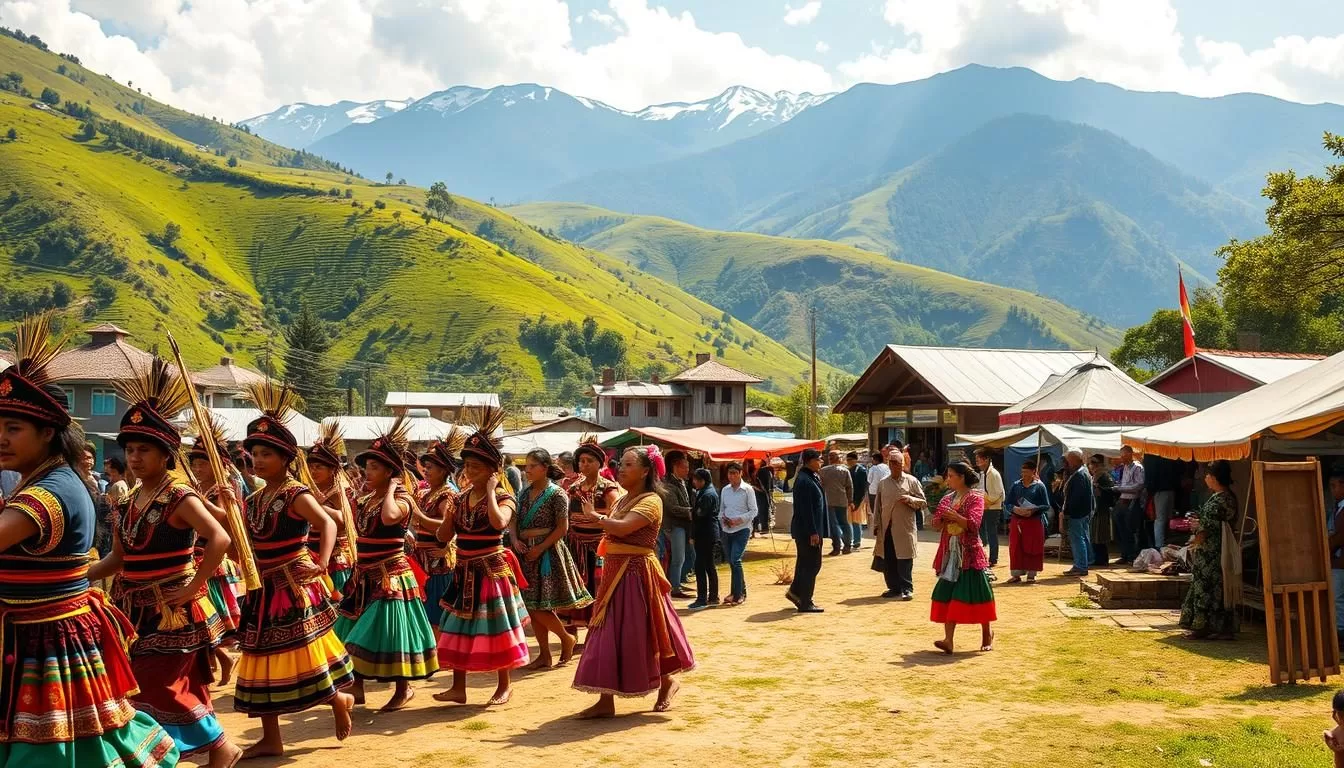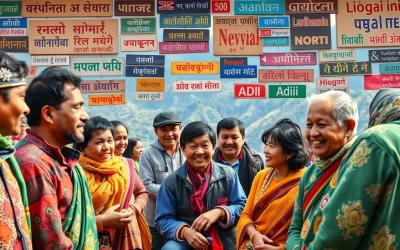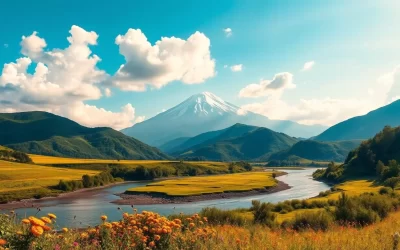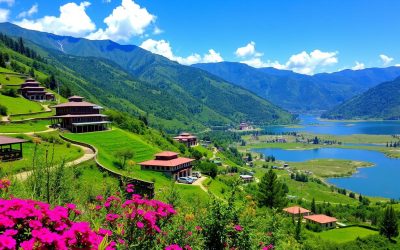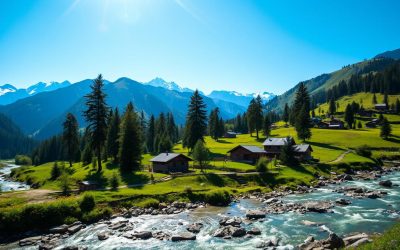✓ Accommodations✓ Flights✓ Rental Cars✓ Tours & Activities
Nestled in India’s northeastern corner, Arunachal Pradesh is a treasure trove of diverse cultures and traditions. The state’s numerous festivals are a testament to its rich heritage, showcasing the spirituality, art, and community values of its people.
With 26 major tribes and over 100 sub-tribes, the state’s cultural landscape is incredibly diverse. From Buddhist celebrations to agricultural festivals, Arunachal Pradesh’s festivals offer a unique glimpse into the lives of its people.
As you plan your visit, experience the state’s vibrant culture by coinciding with one of its many festivals, providing a deeper understanding of the community’s spiritual beliefs and traditions.
The Cultural Tapestry of Arunachal Pradesh
As you explore North-East India, you’ll discover a vibrant tapestry of colorful tribes where music and dance are an integral part of everyday life. Arunachal Pradesh, the easternmost state of India, is a prime example of this cultural richness. With its unique blend of traditions and diverse community practices, the state offers a fascinating glimpse into the country’s heritage.
The state’s geographical diversity, ranging from snow-capped Himalayan peaks to lush valleys, has given rise to distinct tribal cultures. Each of the 26 major tribes in Arunachal Pradesh maintains its own cultural identity through language, dress, cuisine, and festivals. These cultural practices are deeply rooted in the community’s connection to nature and their spiritual beliefs.
| Tribe | Traditional Festival | Cultural Significance |
|---|---|---|
| Monpa | Losar | Celebrates the Tibetan New Year, marking new beginnings. |
| Adi | Solung | Honors agricultural abundance and the community’s hard work. |
| Galo | Mopin | Celebrated as a harvest festival, promoting prosperity. |
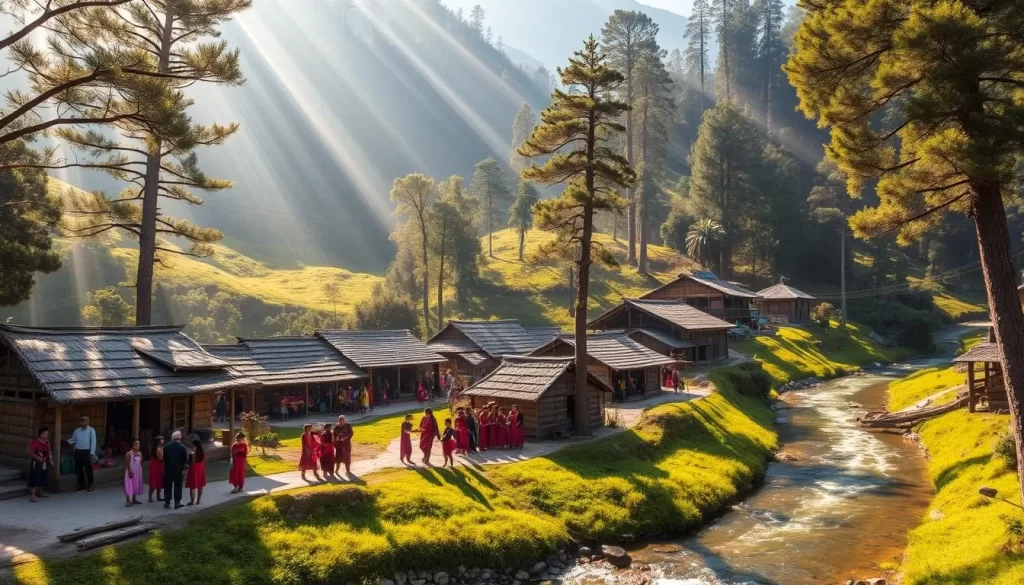 The cultural fabric of Arunachal Pradesh is woven with threads of tradition, community bonding, and a deep connection with nature. The people of this state take great pride in their heritage, and their festivals are a testament to the rich cultural diversity that Arunachal Pradesh has to offer.
The cultural fabric of Arunachal Pradesh is woven with threads of tradition, community bonding, and a deep connection with nature. The people of this state take great pride in their heritage, and their festivals are a testament to the rich cultural diversity that Arunachal Pradesh has to offer.
By experiencing the festivals and traditions of Arunachal Pradesh, you get a glimpse into the lives of its people and the community’s strong social bonds. The state’s unique cultural identity is a treasure trove waiting to be explored.
Losar Festival: Celebrating Tibetan New Year

Experience the vibrant Losar Festival in Tawang, Arunachal Pradesh, a significant celebration for the Monpa tribe. This Tibetan New Year marks the end of the harsh winter season and the beginning of a new year filled with hope and prosperity.
The preparations for Losar begin weeks in advance with thorough house cleaning, symbolizing the removal of bad fortune. The Tawang Monastery becomes the epicenter of celebrations with elaborate decorations and Cham dances performed by monks.
Families exchange gifts and prepare special dishes like Guthuk and Khapse. The three-day celebration includes religious ceremonies, community feasts, and cultural performances showcasing the rich Monpa heritage.
Torgya Festival: A Colorful Monastic Celebration
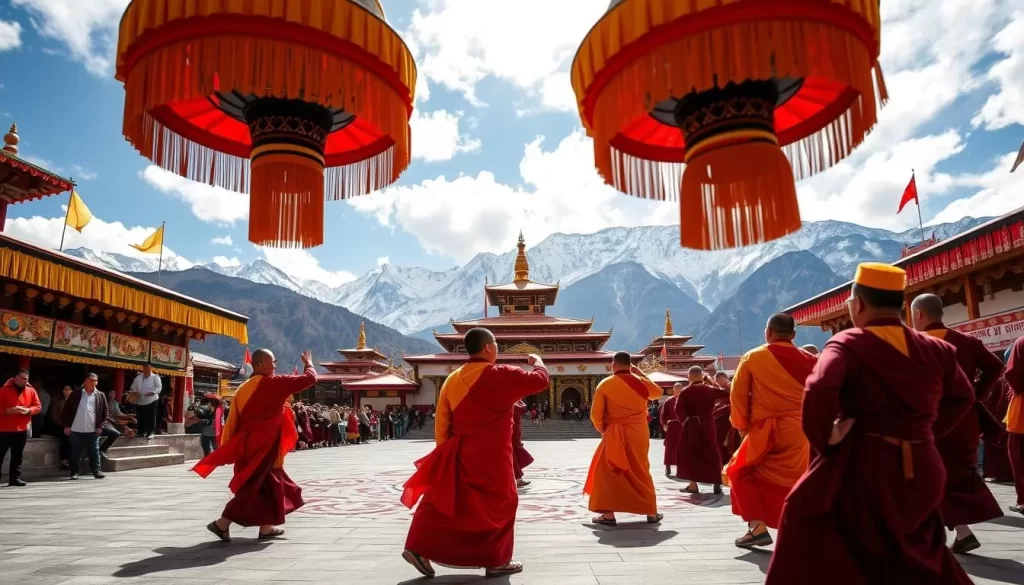
You can witness the Torgya Festival, a 3-day celebration filled with sacred dances and rituals at Tawang Monastery in Arunachal Pradesh. The festival is dedicated to driving away evil spirits and ushering in peace and prosperity.
The highlight of the Torgya festival is the elaborate ‘Chham’ dance performances, where monks don colorful robes and masks to perform sacred routines. These rituals are believed to cleanse the area of negative forces.
Solung Festival: Honoring Agricultural Abundance
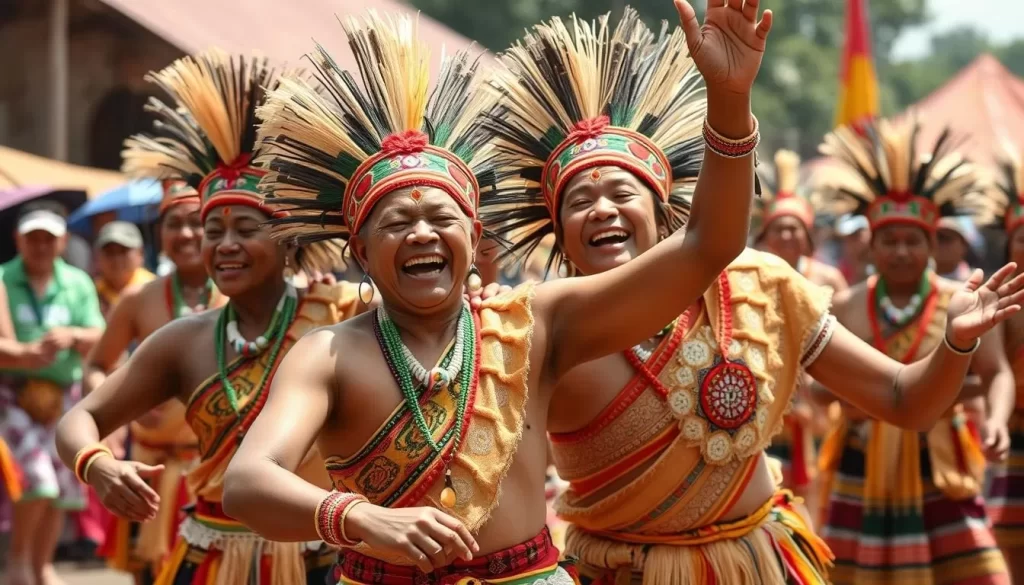
As the harvest season begins, the Adi tribe honors their agricultural abundance with the Solung Festival. Celebrated in the first week of September, this vibrant festival is a perfect blend of tradition, culture, and gratitude.
The Solung Festival is a five-day celebration that includes traditional folk dances like the “Ponung” dance, accompanied by indigenous musical instruments, and the “Tapu War Dance,” where men demonstrate their warrior skills. The festival also involves animal sacrifices, community feasts, and prayers for future agricultural abundance.
By participating in or observing the Solung Festival, you can gain a deeper understanding of the Adi tribe’s rich cultural heritage and their connection to the land.
Nyokum Yullo Festival: Prayers for Prosperity
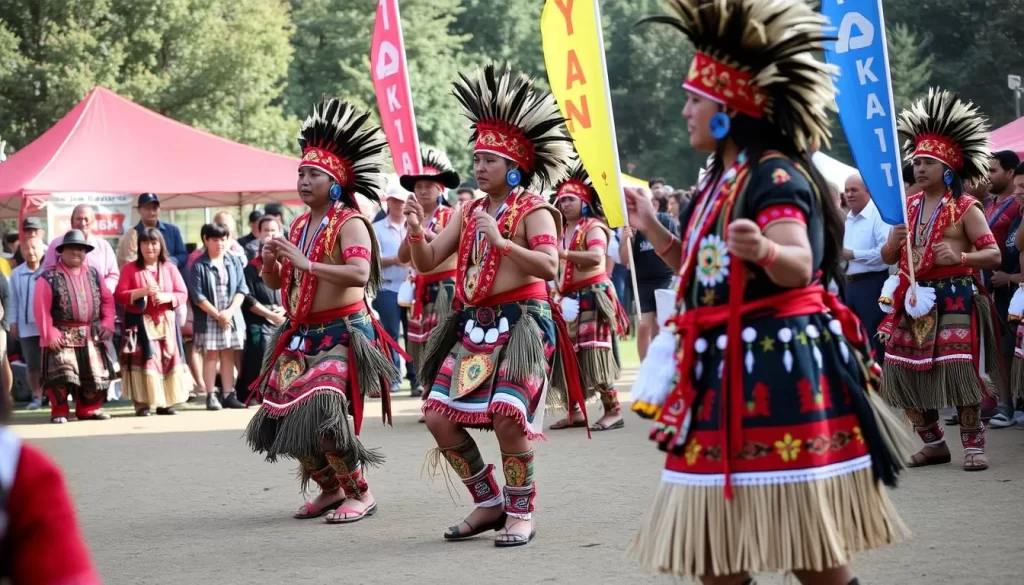
Nyokum Yullo, a festival deeply rooted in tradition, is a time for the Nyishi tribe to seek prosperity and blessings. Celebrated on February 26th, this significant festival is observed in Nyishi-dominated areas, particularly in the districts of East Kameng and Papum Pare.
The name “Nyokum” is derived from two Nyishi words: “Nyok” meaning earth and “Kum” meaning collection. This symbolizes the gathering to worship Mother Earth and seek her blessings. The festival marks the end of winter and the beginning of the agricultural season, with elaborate rituals performed to ensure good harvests, community welfare, and protection from natural calamities.
The celebration begins with the “Rikham Pada” ceremony, where Nyishi shamans (nyibus) invoke deities through chanting, followed by animal sacrifices as offerings to appease supernatural forces. Women dressed in traditional beaded necklaces (gale) and men wearing their distinctive cane headgear (byopa) with hornbill beaks perform folk dances in circular formations to rhythmic drumbeats.
Over time, Nyokum Yullo has evolved from a village-level celebration to a major cultural event with government support, now featuring cultural competitions, indigenous sports, and exhibitions that showcase Nyishi heritage. For visitors, Nyokum Yullo offers a unique opportunity to witness ancient animistic rituals blended with community celebrations, providing insight into the Nyishi worldview that emphasizes harmony between humans and nature.
Mopin Festival: The White Festival of the Galo Tribe

The Mopin Festival is a vibrant celebration of the Galo tribe in Arunachal Pradesh, marking the beginning of a prosperous harvest season. Celebrated annually in April, this harvest festival is a time for community gathering, traditional rituals, and cultural performances.
The highlight of the Mopin Festival is the smearing of rice flour (Etting) on each other’s faces, symbolizing purity, peace, and prosperity. The Galo people wear their finest traditional clothing, with men sporting coats and headgear made from animal fur, while women wear intricately woven skirts and beaded necklaces.
Dree Festival: Agricultural Celebration of the Apatani Tribe
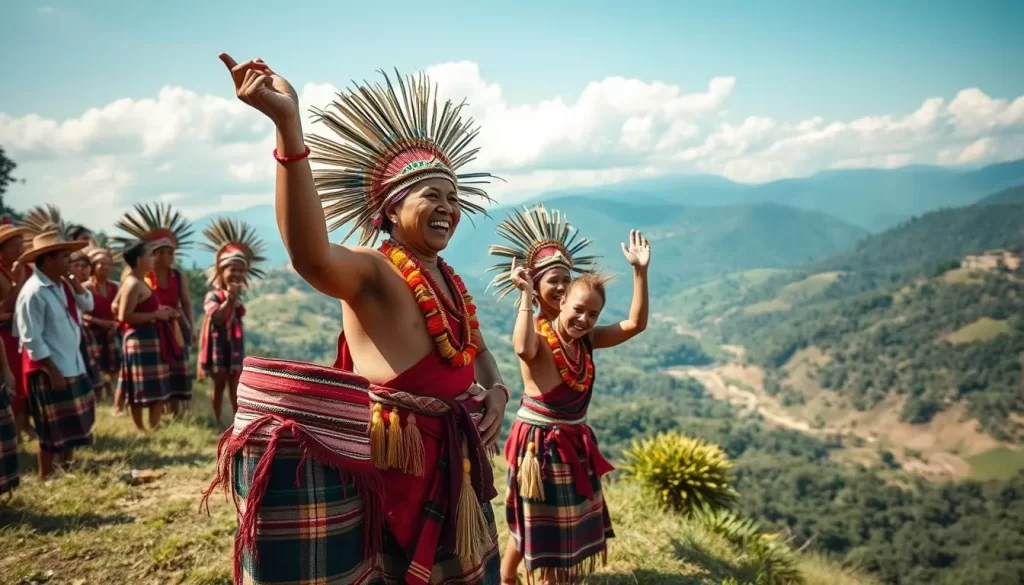
You can experience the rich cultural heritage of the Apatani tribe by attending the Dree Festival in Ziro Valley. Celebrated annually on July 5th, this festival is a vibrant display of traditional prayers, dance performances, and local delicacies, including rice beer.
The Apatani tribe gathers to offer prayers for a healthy crop season and protection from diseases, showcasing their deep connection with community and agricultural prosperity. As a visitor, you can join the locals in their celebrations, respecting their customs and traditions, and enjoy the authentic experience offered by homestays in Ziro Valley.
Myoko Festival: Strengthening Community Bonds
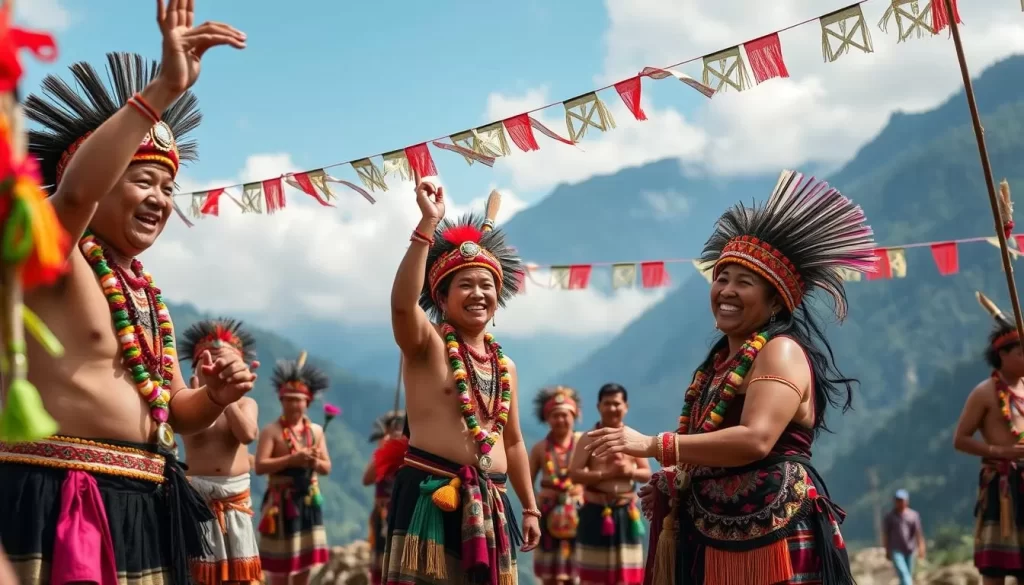
The Apatani tribe’s most cherished festival, Myoko, is a joyous celebration that strengthens community bonds. Observed throughout the month of March, this vibrant festival is a time to honor tribal traditions and seek blessings for fertility and prosperity.
The Myoko festival is a unique celebration where one village hosts the event each year, rotating among the Apatani villages in a traditional cycle. This rotation fosters community harmony and reinforces friendship and unity among the people.
During the month of March, the Apatani tribe comes together to participate in traditional dances, folk songs, and rituals, celebrating their rich cultural heritage.
Boori Boot Festival: Welcoming Spring
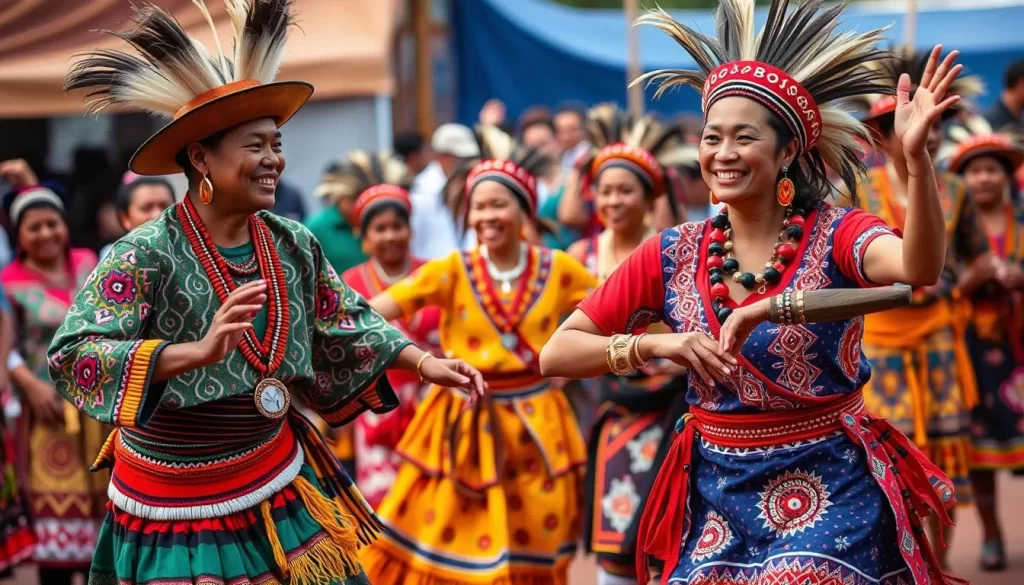
In the heart of Arunachal Pradesh, the Nyishi tribe welcomes spring with the colorful Boori Boot Festival. Celebrated from February 2nd to 6th, this five-day festival marks the arrival of spring and the beginning of the agricultural season.
The name “Boori Boot” translates to “fertility cult,” signifying the tribe’s primary objective of invoking blessings for agricultural prosperity and human fertility. The celebration begins with the construction of a “Boori Boot” altar, where priests perform rituals to honor ancestral spirits and nature deities.
Folk dances, such as the “Rikham Pada,” are an integral part of the festival, with men and women dressed in traditional attire, accompanied by indigenous musical instruments. The festival also includes divination ceremonies conducted by shamans and village elders, predicting weather patterns and harvest prospects.
The Boori Boot Festival concludes with a symbolic ceremony where young saplings are planted, representing new life and the community’s commitment to environmental stewardship. Through shared feasts and cultural practices, the Nyishi tribe strengthens social bonds and welcomes the spring season.
Reh Festival: The Colorful Celebration of Idu Mishmis
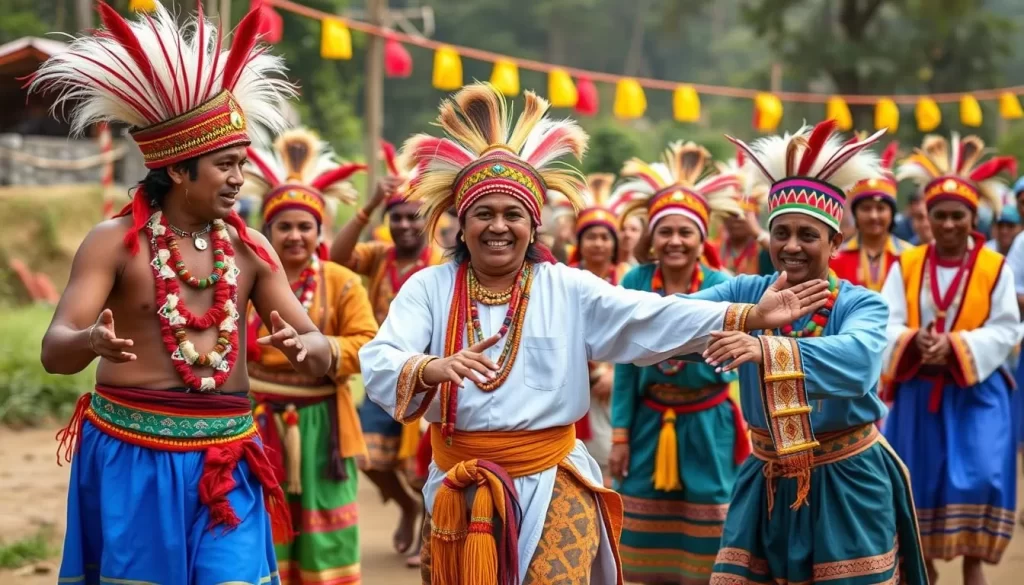
Experience the Reh Festival, a significant cultural event of the Idu Mishmi community, held in Arunachal Pradesh. The Reh Festival is the most important cultural celebration of the Idu Mishmi tribe, typically observed in the first week of February.
This three-day festival is dedicated to Nanyi Inyitaya (the supreme creator) and other deities, with prayers offered for community welfare, prosperity, and protection from natural calamities. The celebration begins with the “Miva Melo” ritual, where Idu Mishmi priests (Igus) chant ancient hymns and make offerings to deities.
Women dressed in their distinctive red and black traditional attire “Ange Tau” and men in white “Erang” perform folk dances in circular formations, accompanied by traditional musical instruments. The festival features elaborate feasting with traditional Idu Mishmi cuisine, including dishes prepared from local herbs and “Apong” (rice beer).
Tamladu Festival: Honoring Ancestral Spirits
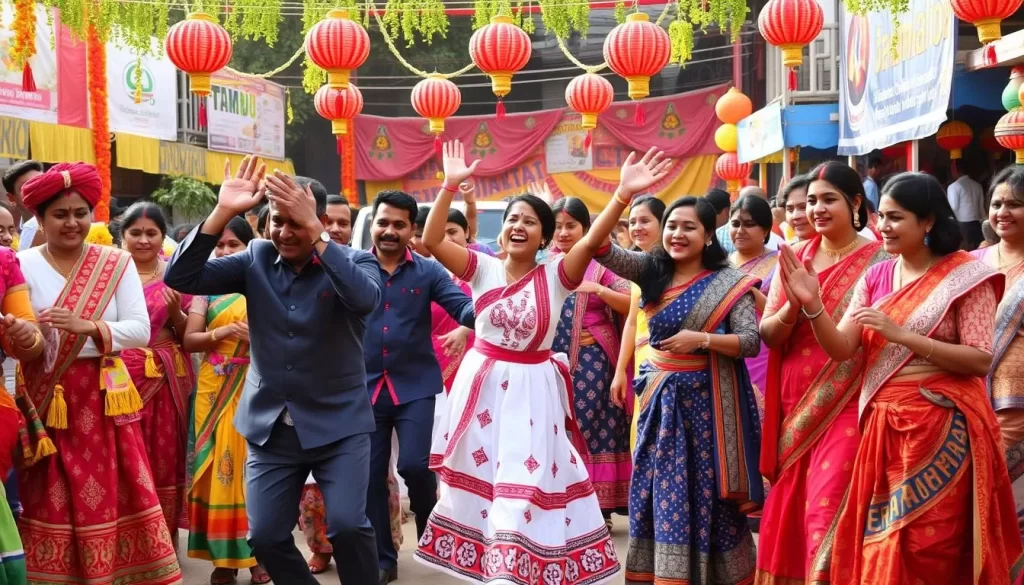
The Tamladu Festival, a three-day celebration, is a testament to the rich cultural heritage of the Digaru Mishmi tribe. Observed primarily in the Lohit and Anjaw districts of Arunachal Pradesh, this festival honors ancestral spirits and deities, offering prayers for community welfare and abundant harvests.
The celebration begins with the “Tamladu Puja,” where village priests perform elaborate rituals, including chanting ancient hymns and making offerings. Traditional folk dances follow, with men and women in colorful attire performing synchronized movements that narrate tribal myths.
Community feasting is an essential aspect, with special dishes prepared from local ingredients. The celebrations conclude with traditional games like archery competitions, showcasing the martial skills valued in Mishmi culture.
Si Donyi Festival: Worshipping the Sun and Moon
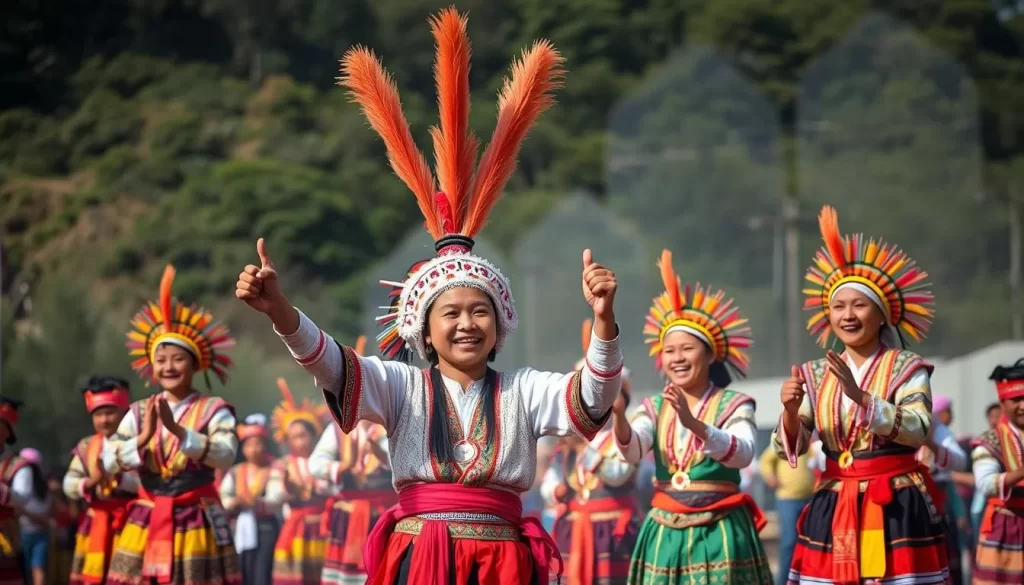
You can experience the rich cultural heritage of the Tagin tribe by attending the Si Donyi Festival, a major religious celebration in Arunachal Pradesh. The Si Donyi Festival is observed from January 4-6 in Daporijo and other Tagin-inhabited areas of the Upper Subansiri district.
The name “Si Donyi” refers to the worship of “Si” (Earth) and “Donyi” (Sun), reflecting the tribe’s animistic belief system. The three-day festival begins with the construction of a ceremonial altar where priests perform elaborate rituals, including animal sacrifices and offerings to appease the Sun and Earth deities.
Traditional Tagin folk dances, particularly the “Bokar” dance, are performed by men and women in colorful traditional attire. The people of the Tagin tribe come together to celebrate, strengthening social bonds among community members.
The festival concludes with community feasting where traditional dishes are shared. Divination ceremonies are also an important aspect of Si Donyi, where priests interpret signs from sacrificial animals to predict weather patterns and community fortunes.
Arunachal Pradesh, India: Top Festivals to Check Out When Visiting
When planning your trip to Arunachal Pradesh, India, timing it around one of the numerous festivals can elevate your travel experience. The state’s festival calendar is filled with vibrant celebrations that showcase its rich cultural diversity.
Some of the key benefits of visiting during festivals include experiencing the local traditions, enjoying traditional cuisine, and witnessing unique cultural practices. You can also expect handicraft exhibitions and markets where you can purchase authentic tribal artifacts.
| Festival | Description | Experience |
|---|---|---|
| Losar | Tibetan New Year celebration | Colorful masked dances |
| Mopin | Galo Tribe’s white festival | Traditional attire and white-powdered faces |
| Ziro Music Festival | Contemporary music gathering | Live music and cultural exchange |
To make the most of your visit, consider booking festival-specific tour packages that include guided experiences and special access to ceremonies. With Hi Tours, you can plan your trip effectively and enjoy a seamless travel experience.
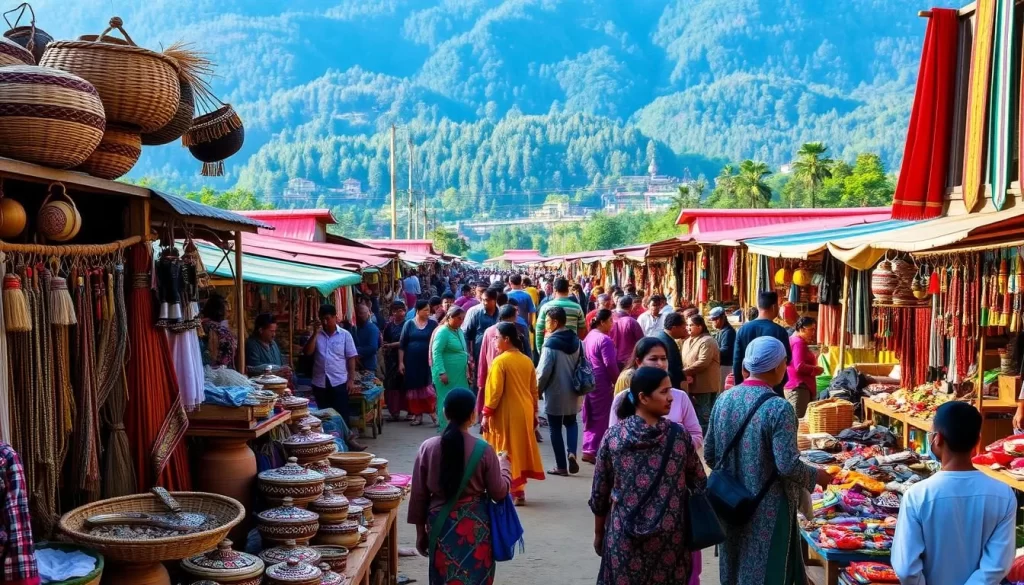
Sangken Festival: The Buddhist Water Festival
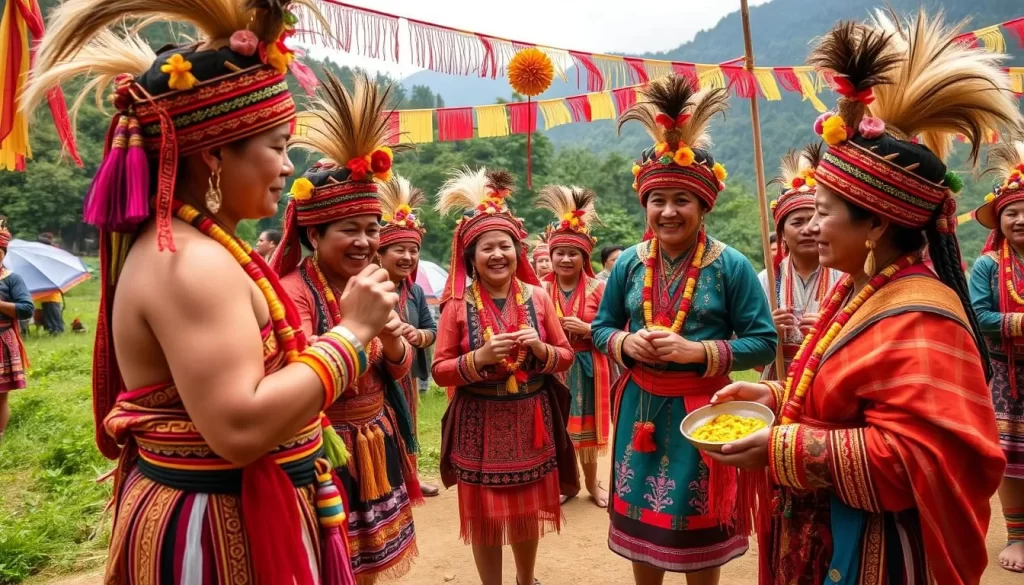
The Sangken Festival, observed by the Khampti and Singpho tribes, is a unique cultural experience in Arunachal Pradesh. Celebrated in mid-April, this three-day festival marks the beginning of the Buddhist New Year according to the lunar calendar.
The festival is often referred to as the “Water Festival” due to its significance in purification and renewal. Water is used to symbolize the washing away of sins and misfortunes from the previous year. The celebration begins with a ceremony where Buddha images from monasteries are taken out in procession and ritually bathed with scented water.
Community members participate by respectfully sprinkling water on each other, a practice believed to bring good fortune. Buddhist monks lead prayer ceremonies and deliver sermons on dharma, while devotees make merit by offering food to monks, releasing fish into rivers, and performing acts of charity.
The festival also showcases the rich cultural heritage of the Khampti and Singpho communities through traditional cultural performances, including folk dances and music using indigenous instruments. These performances highlight the cultural connections between Arunachal Pradesh and Southeast Asia, reflecting the region’s historical ties with countries like Thailand and Myanmar.
Chindang Festival: Traditional Celebration of the Miji Tribe
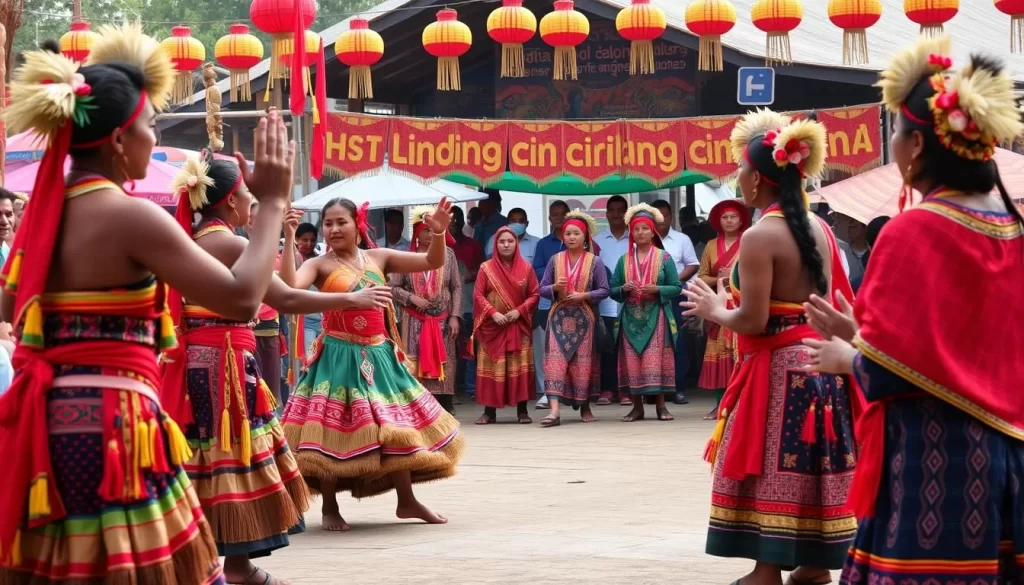
Experience the Chindang Festival, a significant cultural event of the Miji tribe in Bomdila. The Chindang Festival is a harvest celebration observed in October, marking the end of the agricultural season. It’s a time for the Miji tribe to come together and express gratitude for the year’s bounty.
This vibrant festival begins with the “Chindang Puja,” a ritual performed by village priests. They make offerings to deities and ancestral spirits at a specially constructed altar. The altar is adorned with symbolic items, adding to the spiritual ambiance of the ceremony.
Traditional Miji folk dances are a highlight of the Chindang celebrations. Men and women, dressed in their finest traditional attire, perform synchronized movements that narrate tribal myths and historical events. The women wear “Mushaiks,” traditional dresses with colorful embroidery, while the men don “Kambaiks,” traditional jackets, and headgear adorned with feathers.
The festival also features traditional games and sports competitions, showcasing skills valued in Miji culture, such as archery, wrestling, and tests of strength and endurance. Community feasting is an essential aspect of Chindang, with special dishes prepared from the fresh harvest, including various meat preparations, local vegetables, and rice beer shared among villagers and guests.
Best Time to Visit Arunachal Pradesh for Festivals
To witness the vibrant cultural celebrations of Arunachal Pradesh, understanding the best time to visit is crucial. Arunachal Pradesh hosts a wide range of festivals throughout the year, making it a culturally rich destination.
The festival calendar is diverse, with various tribes celebrating their unique traditions. The best time to visit Arunachal Pradesh for festivals is during the winter months (December to February), when celebrations like Losar, Torgya, Boori Boot, Reh, Si Donyi, and Nyokum Yullo take place.
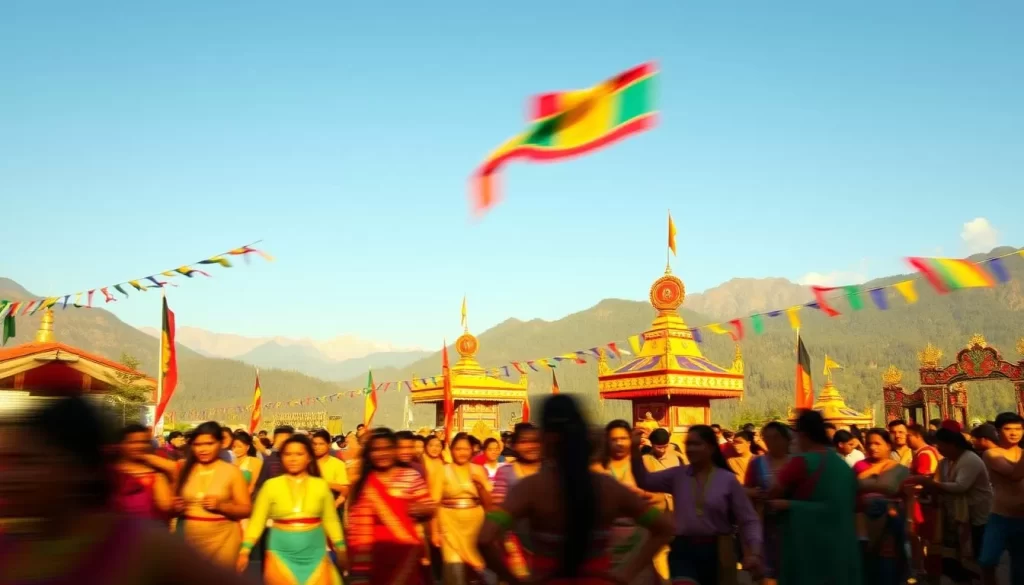
| Season | Festivals | Weather Conditions |
|---|---|---|
| Winter (Dec to Feb) | Losar, Torgya, Boori Boot, Reh, Si Donyi, Nyokum Yullo | Cold temperatures |
| Spring (Mar to Apr) | Myoko Festival, Mopin Festival | Pleasant weather |
| Post-monsoon Autumn (Sep to Nov) | Solung Festival | Comfortable temperatures |
You can plan your visit according to the festival season and make the most of your tour packages. When you travel to Arunachal Pradesh, be sure to respect local customs and traditions.
Conclusion: Experiencing the Cultural Richness of Arunachal Pradesh
The festivals of Arunachal Pradesh are a testament to the state’s rich cultural diversity, offering travelers an immersive experience like no other. By participating in these vibrant celebrations, you not only witness the state’s rich cultural heritage but also contribute to its preservation.
With tour packages that cater to your every need, from travel permits to accommodations, you can focus on soaking in the essence of Arunachal Pradesh’s diverse festivals. Whether you’re looking to travel to new destinations or explore the local culture, festivals in Arunachal Pradesh offer an unforgettable experience.
Book your tour packages now with Hi Tours and embark on a journey to discover the enchanting land of festivals Arunachal.
The above is subject to change.
Check back often to TRAVEL.COM for the latest travel tips and deals.
